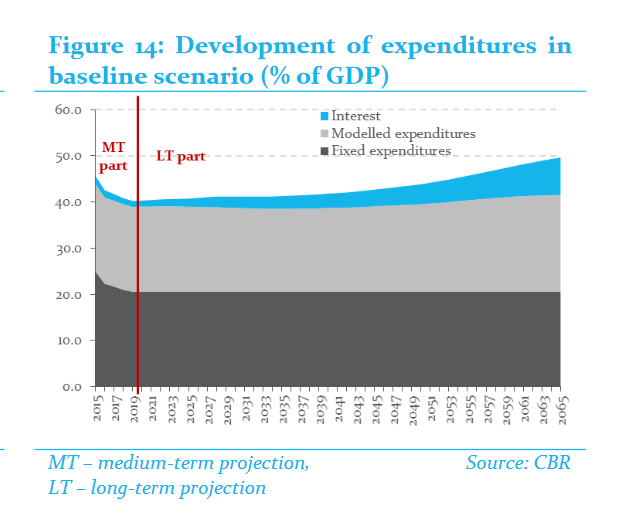The long-term sustainability of public finances remained unchanged in 2015 and the long-term sustainability indicator reached 1.4 % of GDP.

Report on the Long-term Sustainability of Public Finances (April 2016)
- 29. 4. 2016

The long-term sustainability of public finances remained unchanged in 2015 and the long-term sustainability indicator reached 1.4 % of GDP.
The starting position contributed negatively to sustainability due to the worse year-on-year fiscal performance of the general government. Save for the introduction of the minimum old-age pension, the long-term projections of the revenues and expenditures sensitive to demographic changes remained basically unchanged. The indicator was positively influenced by budget development in the medium term under a no-policy-change (NPC) assumption.
The present macroeconomic outlook creates a margin for deficit reduction without government interventions by 1.1 % of GDP by 2019. If the government does not use that margin and keeps the expenditure-to-GDP ratio flat, the indicator will rise to 2.4 % of GDP. On the other hand, the attainment of a balanced to surplus budget in 20191 would bring public finances significantly close to the long-term sustainability. However, such development is contingent on the government’s ability to recast the improved fiscal performance into debt reduction.